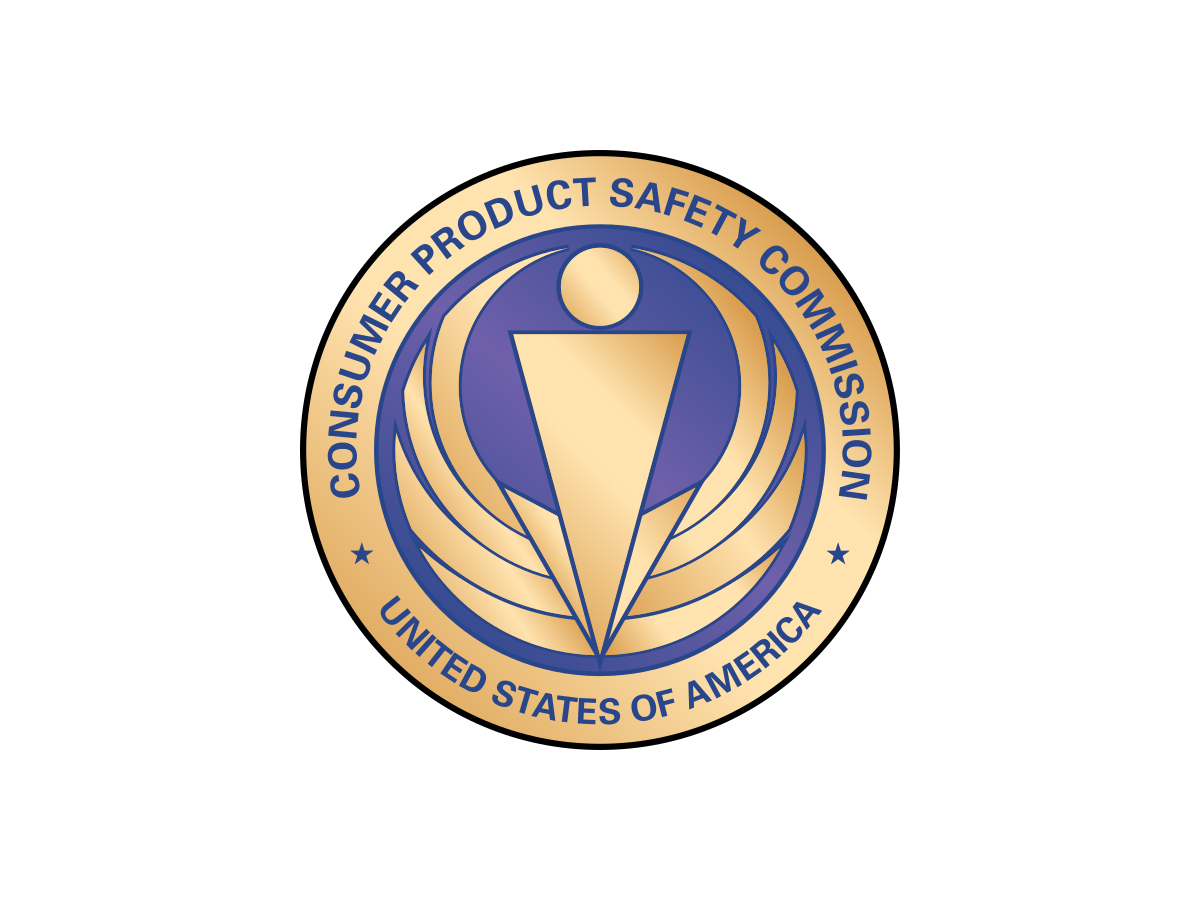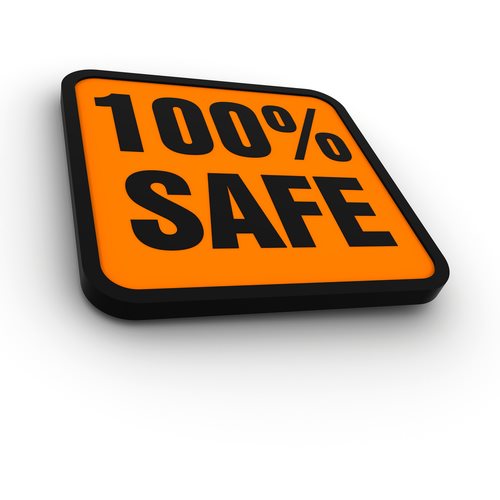Understanding The Consumer Product Safety Commission: A Comprehensive Guide
Let’s dive right into it, folks. The Consumer Product Safety Commission (CPSC) is a name you’ve probably heard in passing, but do you really know what it does? This government agency plays a massive role in ensuring the products we use every day are safe for us and our families. Whether it’s your kids’ toys, your kitchen appliances, or even the furniture in your living room, the CPSC is working behind the scenes to make sure these items don’t harm you. But how exactly does it work? And why should you care? Well, buckle up because we’re about to break it all down for you.
Think of the CPSC as the guardian angel of consumer goods. It’s like that one friend who always double-checks the expiration date on food before you eat it. Except in this case, they’re checking everything from cribs to power drills. The CPSC is serious business, and understanding its role can help you make smarter decisions when buying products.
Now, before we get too deep into the nitty-gritty, let’s clear something up. The CPSC isn’t just some random government body. It’s a powerhouse that enforces strict safety standards and regulations to protect consumers like you and me. So, whether you’re a parent, a homeowner, or just someone who cares about staying safe, this guide is going to give you all the info you need to know about the CPSC.
Read also:Mase 49 The Ultimate Guide To Understanding And Exploring His Remarkable Journey
What Exactly is the Consumer Product Safety Commission?
The Consumer Product Safety Commission, or CPSC, is a federal agency in the United States created back in 1972 under the Consumer Product Safety Act. Its primary mission? To safeguard the public from unreasonable risks of injury or death associated with consumer products. That’s a fancy way of saying they’re here to keep us safe from stuff that could hurt us.
Here’s the deal: the CPSC has jurisdiction over thousands of products, ranging from household items to recreational gear. They set safety standards, conduct product testing, and issue recalls when necessary. If a product is found to pose a danger, the CPSC steps in to ensure it’s either fixed or removed from the market altogether.
Key Responsibilities of the CPSC
Let’s break down the main responsibilities of the CPSC in bullet points to make it easier to digest:
- Setting Safety Standards: The CPSC establishes safety guidelines that manufacturers must follow when designing and producing consumer goods.
- Product Testing: They conduct rigorous tests to ensure products meet these safety standards.
- Recalls: When a product is found to be hazardous, the CPSC issues recalls to prevent further harm.
- Consumer Education: The CPSC provides resources and information to educate the public about product safety.
- Enforcement: They work closely with manufacturers and retailers to enforce compliance with safety regulations.
So, next time you see a recall notice, remember that the CPSC is the one pulling the strings to keep you safe.
Why Should You Care About the CPSC?
Here’s the thing, folks. We live in a world filled with gadgets, gizmos, and everyday items that we rely on without thinking twice. But have you ever stopped to consider whether those items are truly safe? That’s where the CPSC comes in. By enforcing safety standards, they’re helping to prevent accidents, injuries, and even fatalities.
For example, did you know that faulty cribs have been linked to infant deaths? Or that certain toys contain harmful chemicals that can be dangerous for kids? The CPSC is the reason those products are no longer on the market. Without them, we’d be at the mercy of manufacturers who might prioritize profits over safety.
Read also:Charli Damelio Fapello The Tiktok Sensation You Need To Know About
Real-Life Impact of the CPSC
Let’s look at a couple of examples to illustrate the real-world impact of the CPSC:
- Drop-Side Cribs: In 2011, the CPSC banned drop-side cribs after numerous reports of infant deaths. This move saved countless lives and set a new standard for crib safety.
- Lead in Toys: The CPSC played a crucial role in addressing the issue of lead in children’s toys, which can cause serious health problems. Their efforts led to stricter regulations and safer toys for kids.
These examples show just how important the CPSC is in protecting consumers from harmful products.
How Does the CPSC Operate?
Alright, so we know what the CPSC does, but how exactly do they do it? The agency operates through a combination of research, testing, and collaboration with industry stakeholders. They employ a team of experts who specialize in various fields, including engineering, toxicology, and consumer behavior.
Here’s a quick rundown of how the CPSC operates:
- Research and Data Collection: The CPSC gathers data on product-related injuries and fatalities to identify potential hazards.
- Testing and Evaluation: They conduct thorough testing of products to ensure they meet safety standards.
- Collaboration with Manufacturers: The CPSC works closely with manufacturers to address safety concerns and implement necessary changes.
This collaborative approach helps ensure that products are safe from the design phase all the way to the consumer’s hands.
Understanding CPSC Safety Standards
Now, let’s talk about safety standards. The CPSC has established a wide range of standards for different types of products. These standards cover everything from electrical safety to chemical composition. But what does this mean for you, the consumer?
Well, it means that when you buy a product that meets CPSC standards, you can have peace of mind knowing it’s been rigorously tested for safety. For instance, if you’re buying a new toaster, you can rest assured that it’s been evaluated to prevent electrical fires. Or if you’re purchasing a toy for your child, you can trust that it doesn’t contain harmful substances.
Examples of CPSC Safety Standards
Here are a few examples of CPSC safety standards:
- ASTM F963: This standard covers safety requirements for toys, including small parts, sharp edges, and toxic materials.
- UL Standards: These standards address electrical safety, ensuring products like appliances and electronics are safe to use.
- Federal Hazardous Substances Act (FHSA): This act regulates the labeling of hazardous substances to prevent accidental exposure.
By adhering to these standards, manufacturers can ensure their products are safe for consumers.
CPSC Recalls: What You Need to Know
Recalls are one of the most visible ways the CPSC protects consumers. When a product is found to be unsafe, the CPSC issues a recall to alert the public and prevent further harm. But how do recalls work, and what should you do if a product you own is recalled?
First, the CPSC investigates reports of injuries or incidents involving a particular product. If they determine that the product poses a significant risk, they work with the manufacturer to issue a recall. The recall notice includes details about the product, the hazard, and what consumers should do next.
Steps to Take if Your Product is Recalled
If you receive a recall notice for a product you own, here’s what you should do:
- Stop Using the Product: Immediately cease using the recalled item to prevent potential harm.
- Follow Recall Instructions: Check the recall notice for specific instructions, such as returning the product for a refund or exchanging it for a safer version.
- Register for Updates: Sign up for CPSC alerts to stay informed about future recalls.
By taking these steps, you can protect yourself and your family from unsafe products.
Consumer Education and Awareness
One of the CPSC’s key roles is educating consumers about product safety. They provide a wealth of resources to help people make informed decisions when purchasing goods. From safety tips to recall alerts, the CPSC is committed to keeping the public informed.
Here are some ways the CPSC promotes consumer education:
- Public Campaigns: The CPSC runs campaigns to raise awareness about specific safety issues, such as the dangers of button batteries.
- Online Resources: Their website offers a wealth of information, including recall notices, safety guides, and educational materials.
- Community Outreach: The CPSC works with local organizations to spread the word about product safety.
By staying informed, consumers can take proactive steps to protect themselves and their families.
The Importance of Compliance
For manufacturers and retailers, compliance with CPSC regulations is not just a recommendation—it’s a requirement. Failure to comply can result in hefty fines, legal action, and damage to reputation. But beyond the legal implications, compliance is about doing the right thing for consumers.
Here’s why compliance matters:
- Protecting Consumers: By adhering to CPSC standards, companies ensure their products are safe for use.
- Avoiding Recalls: Compliance reduces the likelihood of recalls, saving companies time and money.
- Building Trust: Companies that prioritize safety build stronger relationships with their customers.
In the long run, compliance benefits everyone—consumers, businesses, and the CPSC alike.
Challenges Facing the CPSC
While the CPSC has made tremendous strides in protecting consumers, it faces several challenges in today’s rapidly evolving marketplace. One of the biggest hurdles is keeping up with new technologies and products. As innovation accelerates, the CPSC must continuously update its standards and testing methods to address emerging risks.
Another challenge is ensuring global compliance. With so many products being manufactured overseas, the CPSC must work closely with international partners to enforce safety standards across borders.
Addressing Emerging Threats
To tackle these challenges, the CPSC is taking proactive steps:
- Investing in Research: The CPSC is expanding its research capabilities to better understand new and emerging risks.
- Strengthening International Collaboration: They’re working with global partners to ensure consistent safety standards worldwide.
- Enhancing Consumer Engagement: The CPSC is leveraging technology to improve communication with consumers and increase awareness.
By staying ahead of the curve, the CPSC can continue to protect consumers in an ever-changing world.
Conclusion: Why the CPSC Matters
So there you have it, folks. The Consumer Product Safety Commission is more than just a government agency—it’s a lifeline for consumers. By enforcing safety standards, issuing recalls, and educating the public, the CPSC plays a vital role in keeping us safe from harmful products.
Here’s a quick recap of what we’ve covered:
- The CPSC is a federal agency tasked with protecting consumers from unsafe products.
- They set safety standards, conduct testing, and issue recalls when necessary.
- Compliance with CPSC regulations is crucial for manufacturers and retailers.
- Consumer education and awareness are key to preventing accidents and injuries.
Now, here’s where you come in. If you’ve learned something from this guide, share it with others. Encourage your friends and family to stay informed about product safety. And if you ever suspect a product is unsafe, report it to the CPSC. Together, we can make the world a safer place.
Table of Contents
- What Exactly is the Consumer Product Safety Commission?
- Why Should You Care About the CPSC?
- How Does the CPSC Operate?
- Understanding CPSC Safety Standards
- CPSC Recalls: What You Need to Know
- Consumer Education and Awareness
- The Importance of Compliance
- Challenges Facing the CPSC
- Conclusion: Why the CPSC Matters
Article Recommendations


